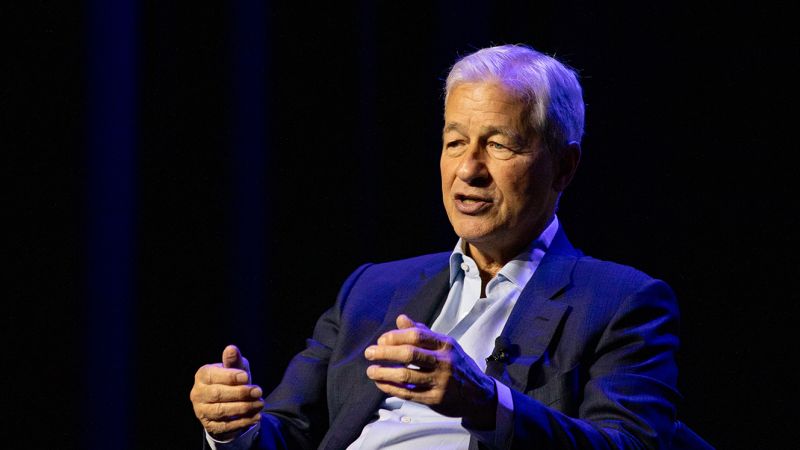JPMorgan Chase CEO Jamie Dimon issued a stark warning Monday to Wall Street: The Federal Reserve may be far from finished with its aggressive regimen of interest rate hikes in the fight against elevated inflation.
Most analysts say the central bank will raise interest rates just one more time, in November, by 0.25 percentage points from its current range of 5.25%-5.50%. However, Dimon told Bloomberg TV it’s possible the central bank will continue hiking rates by another 1.5 percentage points, to 7%.
That would be the highest federal funds rate since December 1990. In March 2022, when the current hiking regimen began, rates were at 0.25%-0.50%.
It’s also a contrarian take. According to the latest Fed projections, officials forecast just one more interest rate hike this year — and rate cuts next year.
Still, Dimon, who leads the largest bank in the United States, says Americans need to be prepared for interest rates to surge.
When members of his board ask him whether interest rates could really go that high, his answer is always “yes,” he told Bloomberg.
Dimon added that he can’t predict the outcome of 7% interest rates on the economy: “We may have a soft landing, we may have a mild recession, we may have a harder recession,” he said.
A 7% rate could also dampen consumer spending and business investment and lead to a slowdown in economic growth.
There are a lot of “potential bad outcomes,” Dimon said, but the worst-case economic scenario would be stagflation, with low growth and high interest rates.
If that happens, he said, “you’re going to see a lot of people struggling.”
The Fed has spent the past 16 months raising rates in an attempt to quiet the booming US economy and bring down elevated prices, but so far the economy has been relatively resilient.
“The consumer is still in good shape,” Dimon told Bloomberg. “They’re still spending money and they still have more money than they did pre-Covid.”
Still, Dimon says, there are two “extraordinary” potential storm clouds on the horizon.
The first is government spending.
Spending by the US government is the highest it has ever been outside of wartime, and deficits are already very high.
“At a minimum I expect volatile markets,” he said. This long-term fiscal spending is also inflationary, he said, which could contribute to rising rates.
The second: Rising geopolitical tensions.
Russia’s war on Ukraine is a humanitarian crisis, he said, and will also impact all global relationships, including US trade with China.
“It’s very hard to see really positive outcomes with China until the Ukraine war is resolved,” he said.
Read the full article here













Leave a Reply